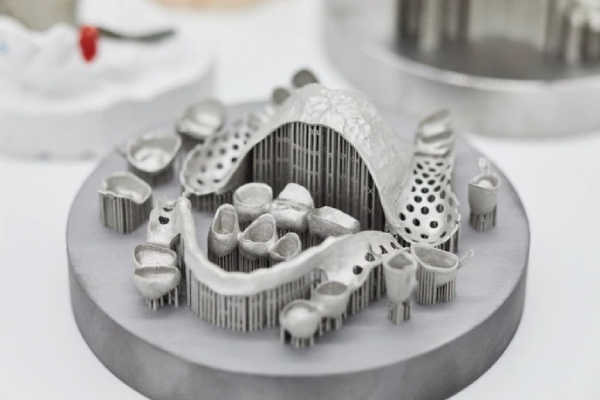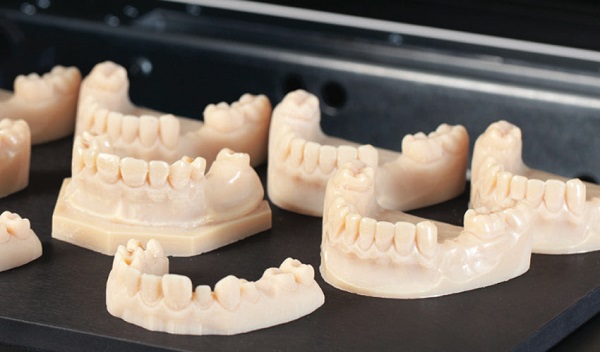The role of additive manufacturing in dentistry

Additive manufacturing processes in dentistry have changed dental and orthodontic practices dramatically and are becoming more common. Additive manufacturing (AM) or 3D printing is a natural fit for dentistry. It has improved the accuracy of implant surgeries and has made implants more comfortable for patients.
Interestingly, the manufacturing market for orthopaedic implants is coming back after a slowdown in 2020 due to COVID-19. Additive manufacturing is a critical component of implant manufacturing and is more prevalent than five years ago. The demand for additive manufacturing is on the rise again as the pandemic declines.
A leading dentist from the best dental hospital in Gowrivakkam explains how dental implants have become effortless due to the additive manufacturing process. Read more here.
What Is Additive Dentistry, And How Does It Work?
Additive manufacturing is a continued trend in the medical device industry, with coatings that enhance bone in-growth and provide antimicrobial properties. This technology involves the production of a 3D object using a digital 3D model or CAD. The additive manufacturing process begins with a virtual image captured by a 3D scanner and then produces one-of-a-kind products by utilizing various additive manufacturing technologies.
In dentistry, 3D-printed implants are being used to create patient-specific implants. Additive manufacturing allows for the creation of pore sizes smaller than 100 to 300 microns, which is optimal for bone in-growth. The process involves making biocompatible implants, such as nitinol, magnesium alloys, and bioceramic implants.
Additive manufacturing is cost-competitive with traditional machining for implant fabrication, and the possibilities for creating innovative designs seem almost limitless. It is also used for the development of 3D tools and models that aid surgeons in their procedures. A surgeon can place an implant through a small incision with pinpoint accuracy by using 3D images of the patient’s anatomy projected inside the body.
3D printers are also used to create dental prostheses. It means that dental technicians can work with digital data records and can prepare dental prostheses in real-time. The printers are capable of creating complex geometries with the least amount of material and are environmentally friendly. 3D printers can be seamlessly integrated into existing CAD/CAM process chains, resulting in improved productivity.
In the following section leading dentists from the best dental clinic in Gowrivakkam share their insights on how AM mechanisms are involved in dental treatments.

AM Mechanisms involved in dental Procedures/Treatments
MDMs are looking for additive manufacturing partners who can manufacture innovative designs that are impossible to produce using traditional methods and advise them on material selection, manufacturability, and regulatory processes. Despite the popularity of additive manufacturing, MDMs prefer to use traditional methods whenever possible, such as casting, forging, and machining, for parts that do not require unique structures or geometries.
CNC machining is maintaining its competitiveness against additive manufacturing (AM) by becoming more efficient by reducing steps in the process. Conventional manufacturing techniques are frequently required to supplement additive manufacturing processes, especially for complex shapes.
When it comes to manufacturing a complex device, quality is everything, and manufacturers must carry out more tests and validations, thanks to the European Union Medical Device Regulation. Phillips Precision Medicraft has expanded its palletized 5-axis machining centres to meet the growing demand for implants and other high-volume products and has improved the quality, repeatability, and newly discovered capacity.
Advantages of metal AM in dentistry
The ability to 3D print dental retainers out of metal is the most significant advancement in the dental industry to date. 3D printers are now being used to create metal dental dentures, previously created using the casting technique. That is advantageous over milling technology because it is quicker and more affordable.
Metal 3D printing has had a transformative impact on the dental industry and has allowed patients to receive custom, more comfortable and more feasible solutions. It has brought many changes to the dental industry, including accuracy, quality, and precision. Metal printing also allows dentists to create partial bridges, dentures, and even custom-filled crowns by 3D printing them out of specialized filaments.
Metal 3D printing technology has demonstrated tremendous promise in the production of dental braces. This technology will allow dentists to produce more efficient and customized braces. The technique is also used to produce high-quality and efficient dental implants. These implants are free of errors, which allows patients to recover much more quickly than previously. The ability to 3D print dental retainers out of metal is yet another significant advancement in the dental industry to date.
Metal 3D printing is becoming more affordable and more effective in the dental industry. It is becoming more popular in dental treatment centres, which can save patients from expensive implant surgery.